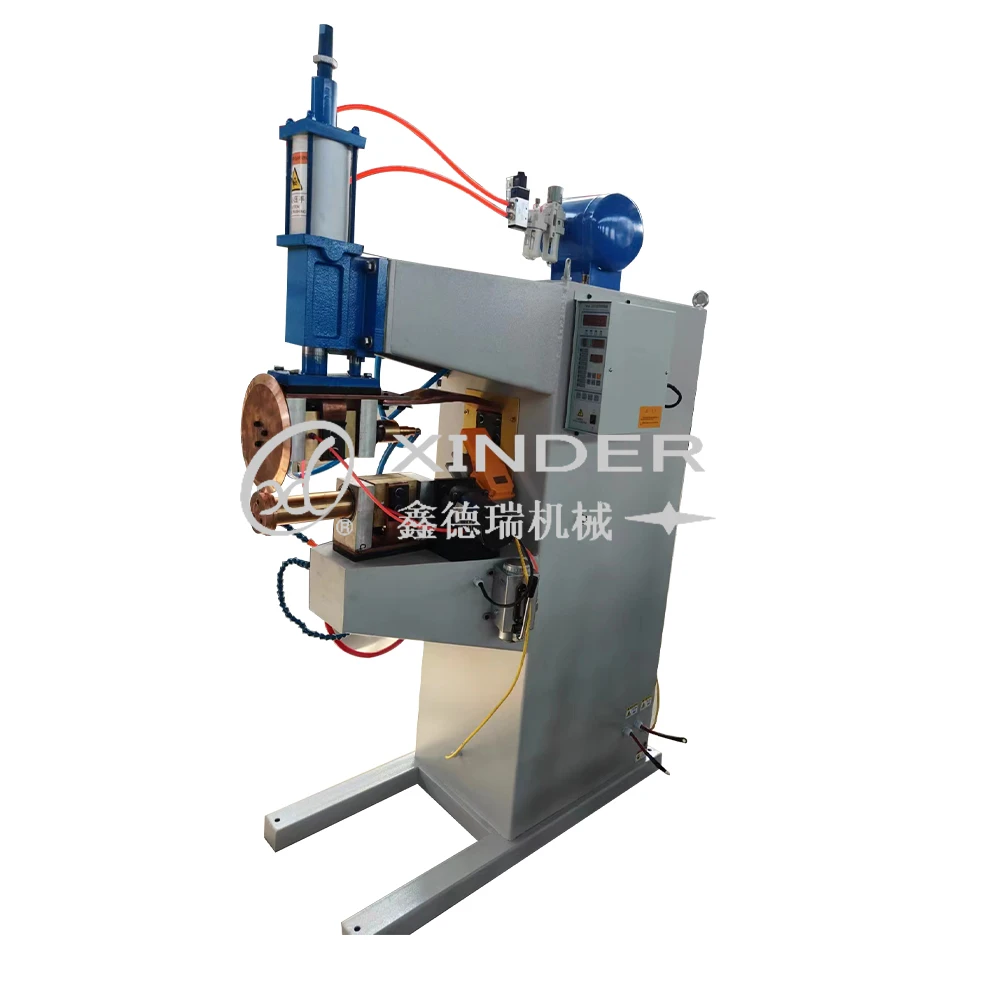Pneumatic Rolling Welding Machine
What Are the Three Types of Welding Machines?
Welding machines come in various types, each designed to meet specific welding needs. The three most common types of welding machines are Arc Welding Machines, Resistance Welding Machines, and Laser Welding Machines.
-
Arc Welding Machines use an electric arc between an electrode and the base metal to generate intense heat, melting the metals to form a strong joint. Common arc welding methods include Shielded Metal Arc Welding (SMAW), Gas Metal Arc Welding (GMAW or MIG), and Tungsten Inert Gas (TIG) welding. Arc welding is versatile and widely used in construction, fabrication, and repair work.
-
Resistance Welding Machines join metals by applying pressure and passing an electric current through the contact point, generating heat due to electrical resistance. This category includes spot welding, seam welding, and projection welding. Resistance welding is fast and efficient, often used in automotive manufacturing and mass production lines for sheet metal joining.
-
Laser Welding Machines use a concentrated laser beam to melt materials precisely at the joint. This method offers high-speed welding with minimal heat-affected zones, making it suitable for delicate or complex components in industries such as aerospace, medical devices, and electronics.
Each type of welding machine has unique advantages and is selected based on factors like material type, thickness, production volume, and desired weld quality. Understanding these types helps manufacturers choose the right welding solution for their specific applications.
What Is an Automatic Welding Machine?
An automatic welding machine is a system that performs welding operations with minimal human intervention, using programmed controls and mechanized equipment to carry out precise and consistent welds. Unlike manual welding, where a skilled operator directly controls the welding torch or electrode, automatic welding machines follow preset instructions to maintain parameters like welding speed, current, voltage, and torch position.
These machines typically include robotic arms, conveyor systems, or specialized fixtures to handle workpieces and perform repetitive welding tasks efficiently. They are widely used in industries such as automotive manufacturing, shipbuilding, aerospace, and heavy machinery production, where high-volume, uniform quality welds are essential.
Automatic welding machines improve productivity by reducing operator fatigue and error while enhancing weld quality through precise control. They also increase safety by minimizing human exposure to harmful fumes, intense light, and high temperatures. Common types include automatic arc welding, resistance welding, and laser welding systems.
The flexibility of automatic welding machines allows integration with other manufacturing processes and customization to suit different materials, shapes, and joint types. Overall, these machines help streamline production, lower costs, and achieve consistent, high-quality welds in demanding industrial environments.


